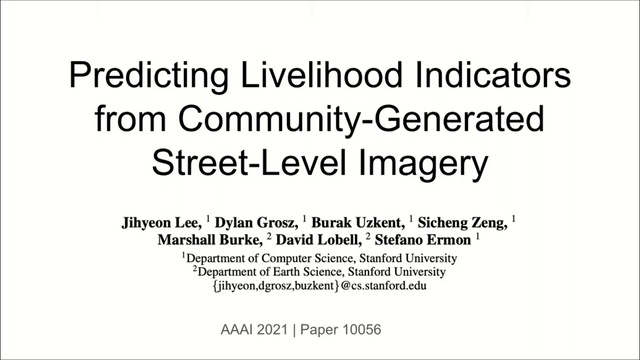Abstract:
Major decisions from governments and other large organizations rely on measurements of the populace's well-being, but making such measurements at a broad scale is expensive and thus infrequent in much of the developing world. We propose an inexpensive, scalable, and interpretable approach to predict key livelihood indicators from public crowd-sourced street-level imagery. Such imagery can be cheaply collected and more frequently updated compared to traditional surveying methods, while containing plausibly relevant information for a range of livelihood indicators. We propose two approaches to learn from the street-level imagery: (1) a method that creates multi-household cluster representations by detecting informative objects and (2) a graph-based approach that captures the relationships between images. By visualizing what features are important to a model and how they are used, we can help end-user organizations understand the models and offer an alternate approach for index estimation that uses cheaply obtained roadway features. By comparing our results against ground data collected in nationally-representative household surveys, we demonstrate the performance of our approach in accurately predicting indicators of poverty, population, and health and its scalability by testing in two different countries, India and Kenya. Our code is available at https://github.com/sustainlab-group/mapillarygcn.


